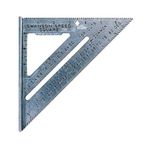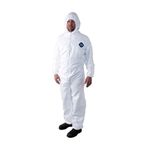Insulating and Parging Foundations
Covering concrete walls with rigid foam insulation and troweling on stucco requires experience with the materials.

Synopsis: A builder explains his method of insulating concrete foundations by applying a layer of rigid foam insulation and a coat of stucco over the insulation above ground. He experiments with a few approaches before settling on a single coat of cement stucco over a substrate of expanded metal lath.
If you’ve got the idea that a builder’s skill is an unchanging body of knowledge passed down through the generations, think for a minute about insulating a foundation from the exterior. Even in cold climates, what you used to see between the bottom of the siding and the grade was the bare concrete foundation wall. But these days, with estimates of heat lost in a house through the foundation running as high as 30%, what looks like concrete is more likely parging, or stucco, applied over rigid foam insulation.
Insulating the outside of foundations has been a problem for a lot of builders, including me, because many of the materials and methods are new. Although rigid foam-board insulation doesn’t look like much of a problem, it isn’t as simple as it first appears. Polystyrene is the insulating material most often used. It comes in 2-ft. wide panels and handles like plywood, but it’s a lot lighter. You can cut it with anything from a knife to a table saw. But polystyrene foam is produced in two forms: expanded and extruded. Expanded polystyrene (EPS), also known as headboard, is more susceptible to soaking up moisture than its extruded cousin, say the researchers on one side of this controversy. This could lead to a considerable loss in R-value. Although I used expanded polystyrene on the job shown here, I think the extruded version is probably the better bet despite its higher cost.
There are more than 100 makers of EPS; but extruded polystyrene is made in the U. S. by only three companies: Dow Chemical, whose blue-tinted Styrofoam is often called blueboard; Minnesota Diversified Products, whose yellow product is trademarked Certifoam; and U. S. Gypsum, the makers of pink Foamular.
Whichever brand you use, the process of applying it is the same, and so are the problems. For instance, asphalt-based products dissolve most foams, so my usual method of waterproofing a foundation is suddenly out the window. And to complicate things even more, polystyrene needs to be protected above grade from impact as well as from deterioration by ultraviolet light from the sun.
I wanted a protective coating that was easy to install, good looking and long lasting. There are many commercial systems — fiberglass panels, super stucco mixes, and even a rigid insulation with a factory-applied coating that can be attached to concrete forms before pouring — but I wanted to use more traditional materials.
I first used asbestos board cemented on the foam, but it is fragile, hard to repair, impossible to glue, and required a lot of fitting time at corners, doors and windows. I also tried a latex-cement product applied directly on the foam. Unfortunately, it didn’t age well. In fact, I have repaired not only the job I did with it, but several others in my area.
For more photos, drawings, and details, click the View PDF button below:
Fine Homebuilding Recommended Products

Original Speed Square

Disposable Suit

Caulking Gun






















